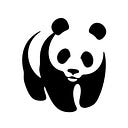Risking our biggest natural assets: mapping the water risk of Ramsar sites
By Alexis Morgan, WWF Water Stewardship Lead
With the upcoming launch of WWF’s upgraded Water Risk Filter following this week’s 13th Conference of the Parties to the Ramsar Convention on Wetlands, we felt a mash up of marsh meets map might be appropriate. Wetlands, for the uninitiated, are widely recognized for their huge ecosystem service value — indeed, few, if any ecosystems provide as much value to society as wetlands.
As investors begin to increasingly consider hybridized grey-green infrastructure to mitigate water risks and address shared river basin challenges, considering how wetlands are exposed to water risk should be of interest not just to NGOs, but indeed to governments interested in economic growth, to businesses seeking to mitigate basin risk, and to investors who are looking at green infrastructure.
Recognizing that our Water Risk Filter is built for the water risks facing companies, which differ slightly from the risk facing wetlands, we have, for the purposes of this analysis, modified the weightings. We focused on a mix of physical (scarcity, quality and ecosystem degradation), regulatory risks (removing infrastructure), and reputational (since it also picks issues, such as conflict and biodiversity importance). If you’re interested in the details, give us a shout.
So what did we find?
- Many Ramsar sites in MENA are amongst the most at risk. Coming out in the unenviable “most at risk” top spot was Iraq’s Ramsar designated Hammar Marsh. These marshes, located between the Tigris and Euphrates and in the heart of one of the cradles of civilization have been massively reduced since the 1990s when extensive drainage projects were implemented. Their designation as a Ramsar site, in 2014, combined with recent restoration, hopefully signals the return of a key regional wetland. In fact Iraq held the top three spots with Hammar being joined by Iraq’s Central Marshes, and Sawa Lake.
Beyond Iraq however, many of the top listed sites occurred in the Middle East and North Africa, and neighbouring countries: Réserve naturelle de Réghaia (Algeria), Sabkhat al-Jabbul Nature Reserve (Syrian Arab Republic), Haleji Lake (Pakistan) and Complexe de Sidi Moussa-Walidia (Morocco) were all quite high on the list.
This speaks in part to the combined water scarcity and water quality challenges in this region, but also to the ecosystem degradation and water governance challenges throughout. There remains an ongoing need to ensure that wetlands, throughout this part of the world, are given access to water, and protected from water pollution through enforced legislation. - Wetlands face different threats in different places. While some of the challenges of water scarcity affect wetlands in MENA, Africa and Asia, other challenges are present. Perhaps one of the greatest issues facing wetlands the world over is land use conversion. From Manantiales Geotermales de Julimes that sit beside the Rio Conchos in Mexico to the Eastern Syvash Ramsar site in Ukraine, wetlands are often surrounded by agricultural areas that not only eliminate habitat, but also degrade the quality of habitat through nutrients and pesticides, along with the introduction of invasive species.
- Companies and investors can play a role. In addition to exploring which wetlands faced the greatest levels of water risk, one of the unique aspects of the Water Risk Filter, is that we can explore which companies are located in the same basins as these threatened Ramsar sites. WWF recognizes that not only are wetlands hugely valuable assets to species and communities, but they are a front line form of resilience for businesses and the economic interests of the basin. Accordingly, we have begun to work with investors to help to finance green infrastructure restoration, combined with grey infrastructure investments, through our Bankable Water Solutions work. Like the Gediz Delta, one of Turkey’s most threatened Ramsar sites, the Buyuk Menderes is a river system with significant wetlands and value to the economy. There, we are working with textile companies, investors and the local authorities to drive investment not only to improve their bottom line in cleaner production but that will reduce pollution in the river and downstream delta.
WWF is proud to continue to play a key role in the Ramsar convention. We believe that water risk is an issue facing both companies and natural assets, like wetlands, alike and that it is important to understand the risk facing green infrastructure that provides nature-based solutions. Lastly, we believe that these assets, when given funding, can deliver returns for not only businesses, in the form of pollution reduction and flood risk mitigation, but for people and nature as well.
